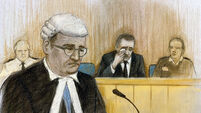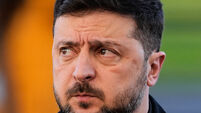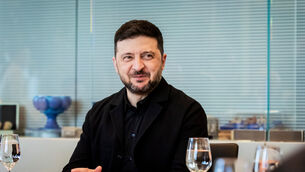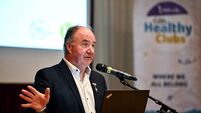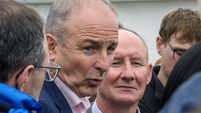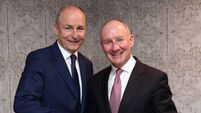US to compare weapons report with intelligence
American officials are to check Iraq’s report on its weapons programmers against US intelligence information that suggests Saddam Hussein has hundreds of tons of chemical weapons, the ability to produce biological weapons and an active nuclear weapons programmed.
The officials are not confident that Iraq’s report will have accurate information but say it still will be useful – if nothing else, so the administration of President George Bush can try to catch Saddam in a lie. It will be examined and compared on a site-by-site basis to US information.
Bush, during a political trip to Louisiana, said yesterday he remained skeptical about Saddam’s intentions.
“We’re not interested in hide-and-seek inside Iraq. The only question is ... will this man disarm?” Bush said. ”The choice is his. And if he does not disarm, the United States of America will lead a coalition to disarm him.”
Iraq denies it has any weapons of mass destruction.
Many US defence and intelligence officials are convinced that Saddam has chemical and biological weapons and an active effort to obtain nuclear weapons. In their view, if inspections do not turn up any weapons, it could mean Saddam has simply managed to hide them successfully.
But officials also acknowledge that international support for war could be undercut if the United Nations does not find weapons.
While surprised that Iraq has provided easy access to UN inspectors so far, officials said the likelihood that it would throw up roadblocks would increase as the inspectors conducted more visits, particularly on suspected weapon sites they had not sought access to in the past.
Secretary of state Colin Powell, briefing reporters while en route to Colombia, said the inspection process in Iraq was “off to a pretty good start” and noted the inspectors had been allowed to visit sites without Iraqi interference.
“I’m not prepared to say the inspections are working,” Powell said. “They’re not up to strength and they’re not up to speed yet.”
Still absent from US intelligence’s prying eyes – including cameras mounted on Predator drones and spy satellites – are signs that Iraq is shuffling equipment and people around to avoid inspectors.
Several months ago, Iraq did just that, apparently in anticipation of new inspections, but no major movements have been detected since, said a US defence official. That is being taken as a sign that inspectors have yet to tighten the net on Saddam.
Under a UN Security Council resolution unanimously approved last month, Iraq has until Sunday to declare all of its biological, chemical and nuclear weapon programmes and any long-range missiles. Iraq’s ambassador to the United Nations, Mohammed Al-Douri, said the declaration could be ready as early as today.
“We have repeated our position several times that we have nothing hidden,” Al-Douri said.
Any information provided by Iraq or uncovered by inspectors will be compared to existing US intelligence on a site-by-site basis, officials said. That same intelligence would be used to draw up target lists for any US strikes.
At the Pentagon, defence secretary Donald Rumsfeld said Iraq might choose any number of responses, ranging from an unqualified denial of weapons programmes to saying most of such work had been destroyed by previous UN inspections and what little remained would be surrendered.
He said he saw little hope for a successful UN inspection process unless the Iraqis decided to co-operate.
“You can’t expect people to go into a country that is just enormous, with all that real estate, and all those underground facilities ... and expect them to engage in a discovery process and turn up something that somebody is determined for them not to turn up,” he said. ”Inspections work when the country co-operates, they tend not to work if the country doesn’t.”
Hundreds of sites are of interest to US intelligence and UN inspectors, from factories to labs to missile plants. In October, the CIA released an unclassified paper summarising its information on Iraq’s weapons programme.
It accused Saddam of possessing chemical and biological weapons as well as prohibited long-range missiles to deliver them. It also said Saddam had a programme to enrich uranium for use in a nuclear weapon and may have acquired some components for that program.
His weapons cannot reach the United States unless he uses covert operatives to deliver them in terrorist-like strikes. Instead, US officials say the greatest direct threat from Iraq’s weapons is to US troops in the Middle East and to Israel, but Saddam will probably only use them if he is cornered.
Bush has said he fears Saddam will supply the weapons to terrorist groups like al-Qaida.
Biological weapons programmes, including anthrax and ricin toxin, are of particular concern.
Iraq’s ability to produce the agents has grown in the past decade, despite sanctions, US bombing and UN inspections, the CIA report says.







